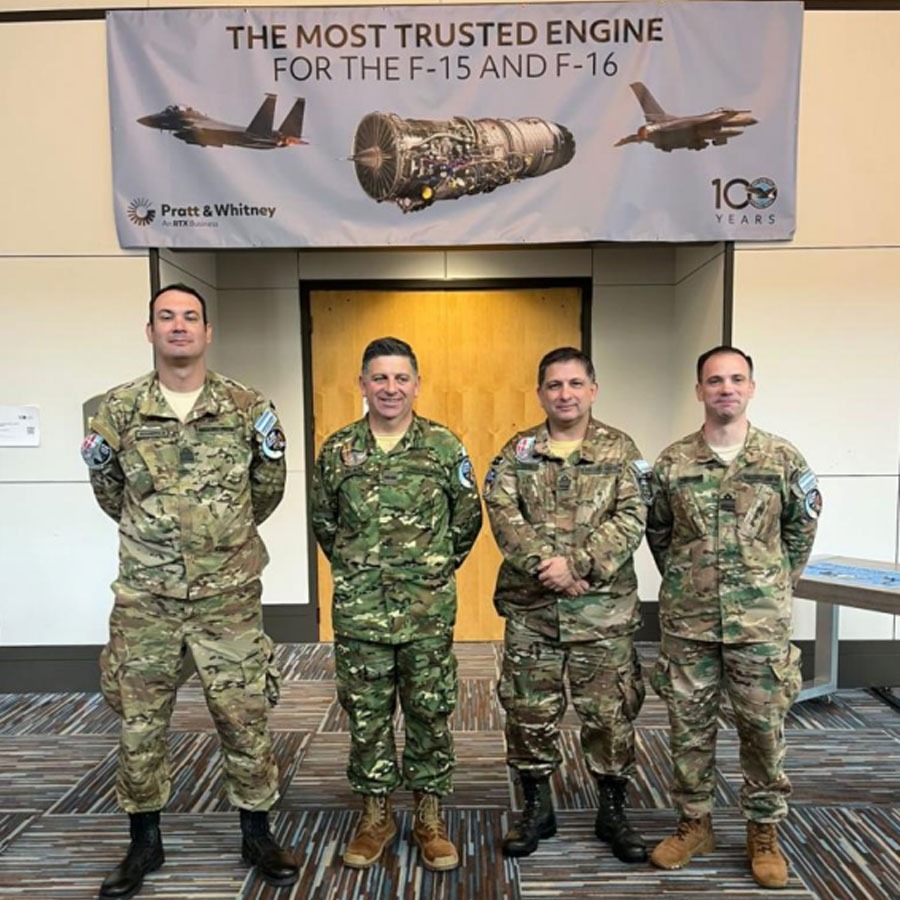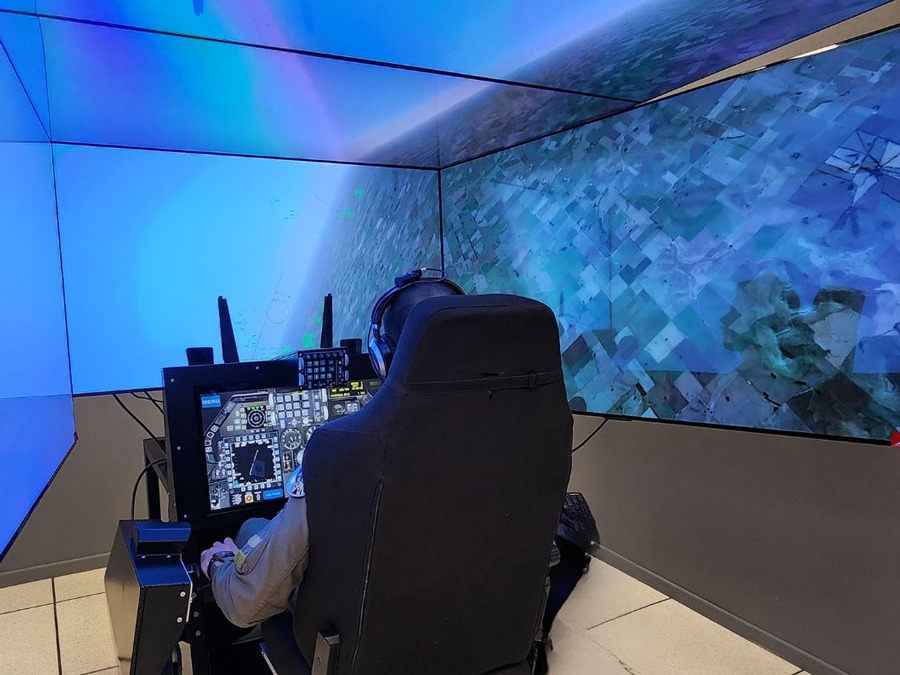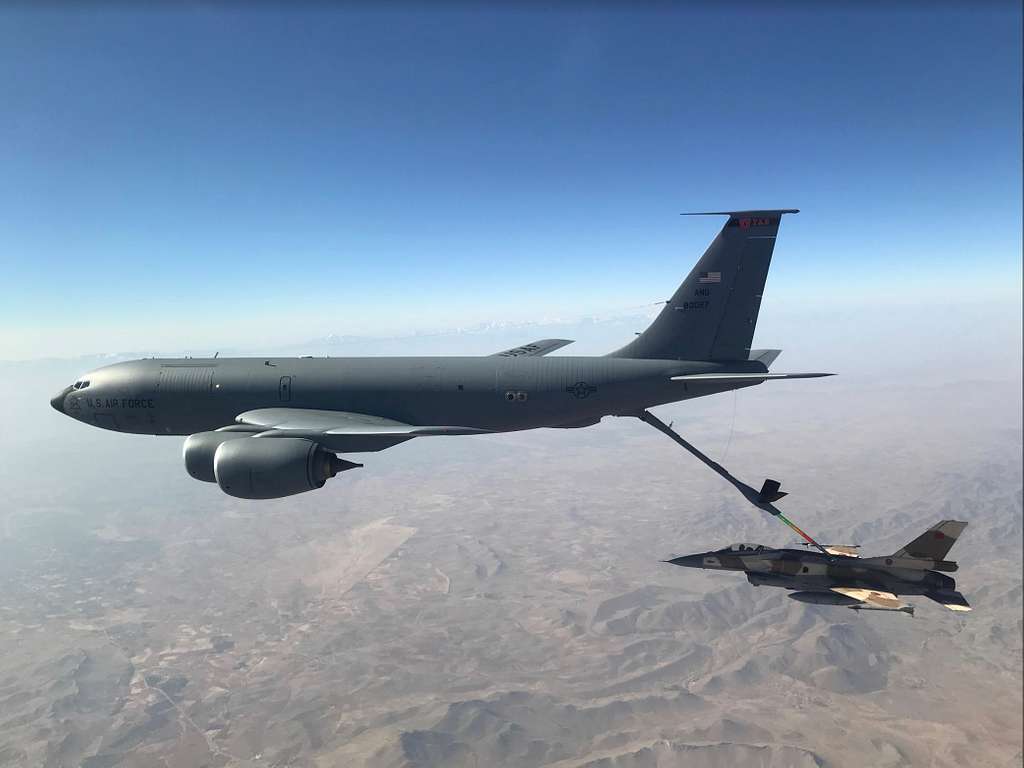Simulators and engines for Argentina’s F-16 fleet
Argentina joins Pratt & Whitney’s F100 user network and boosts training in Tandil
As part of the “Peace Condor” program, the Argentine Air Force (FAA) achieved two major milestones in May on its path toward full operational capability with F-16 fighter jets: its first participation in the global F100 engine users conference hosted by Pratt & Whitney, and the launch of a state-of-the-art tactical simulation center at the VI Air Brigade in Tandil.
These developments highlight Argentina’s growing integration into the international community of F-16 operators, while also enhancing strategic capabilities in training, maintenance, and long-term logistical support.
Integration into the F100 ecosystem
From May 19 to 23, an Argentine Air Force delegation attended the F100-PW-220 and -229 engine user conference in Midwest City, Oklahoma, for the first time. Hosted by Pratt & Whitney, the event gathered representatives from 27 countries and celebrated the U.S. company’s centennial and 50 years of combat aircraft propulsion experience, with over 30 million accumulated flight hours.

Discussions focused on support, modernization, and development of new modules for the F100 engines, whose operational lifespan is projected to extend beyond 2050. The formal inclusion of Argentina—along with Denmark—as a new operator was a key moment, securing its place in a global network of users sharing critical insights and advanced sustainment capabilities.
The Argentine delegation also held bilateral meetings with U.S. Air Force officials and Pratt & Whitney executives, discussing industrial cooperation, maintenance strategies, and technology transfer—crucial steps toward achieving logistical autonomy for a high-demand weapons system like the F-16.
Advanced tactical simulation in Tandil
Simultaneously, the FAA inaugurated its new Tactical Simulation Center at the VI Air Brigade in Tandil, featuring four DART (Deployable Advanced Readiness Trainer) simulators developed by Danish firm Arenalogic and IFACTS-2 fire support systems supplied by IFAD.

These simulators replicate the cockpit and operational software of the F-16s acquired from Denmark, enabling immersive training for air-to-air and air-to-ground missions. They are equipped to operate in LVC (Live, Virtual, and Constructive) mode, integrating real flights with simulated scenarios—greatly expanding training capabilities without consuming actual flight hours.
Major Roberto Leytes of the F-16 Program explained that this technology “represents the aircraft’s flight envelope and its weapon systems,” marking a significant leap in operational training for Argentine pilots.
The simulators are network-enabled, allowing joint training across bases with pilots, FAC/JTAC operators, and GCI controllers in complex and dynamic scenarios. This distributed training capacity is a first for the FAA and positions Tandil as a regional hub for advanced tactical instruction.
Building an operational architecture around the F-16
These additions are part of a broader strategy that includes creating a new digital air support center in Mendoza, forming a JTAC squadron, and negotiating KC-135 aerial refueling platforms to expand the F-16’s range. Together, they represent a deep reconstruction of Argentina’s air defense capabilities after a decade without operational supersonic combat aircraft.

Far from being a simple aircraft acquisition, Argentina’s integration of the F-16 marks a doctrinal, logistical, and technological transformation. Participation in international sustainment forums like the F100 conference, along with the adoption of interoperable training simulators, places the Argentine Air Force on a new trajectory—not just as a user, but as a potential technical contributor within the global community of operators of the Western world’s most widely used fighter system.

/https://aviacionlinecdn.eleco.com.ar/media/2024/11/F-16-Fuerza-Aerea-Argentina.jpg)
Para comentar, debés estar registradoPor favor, iniciá sesión